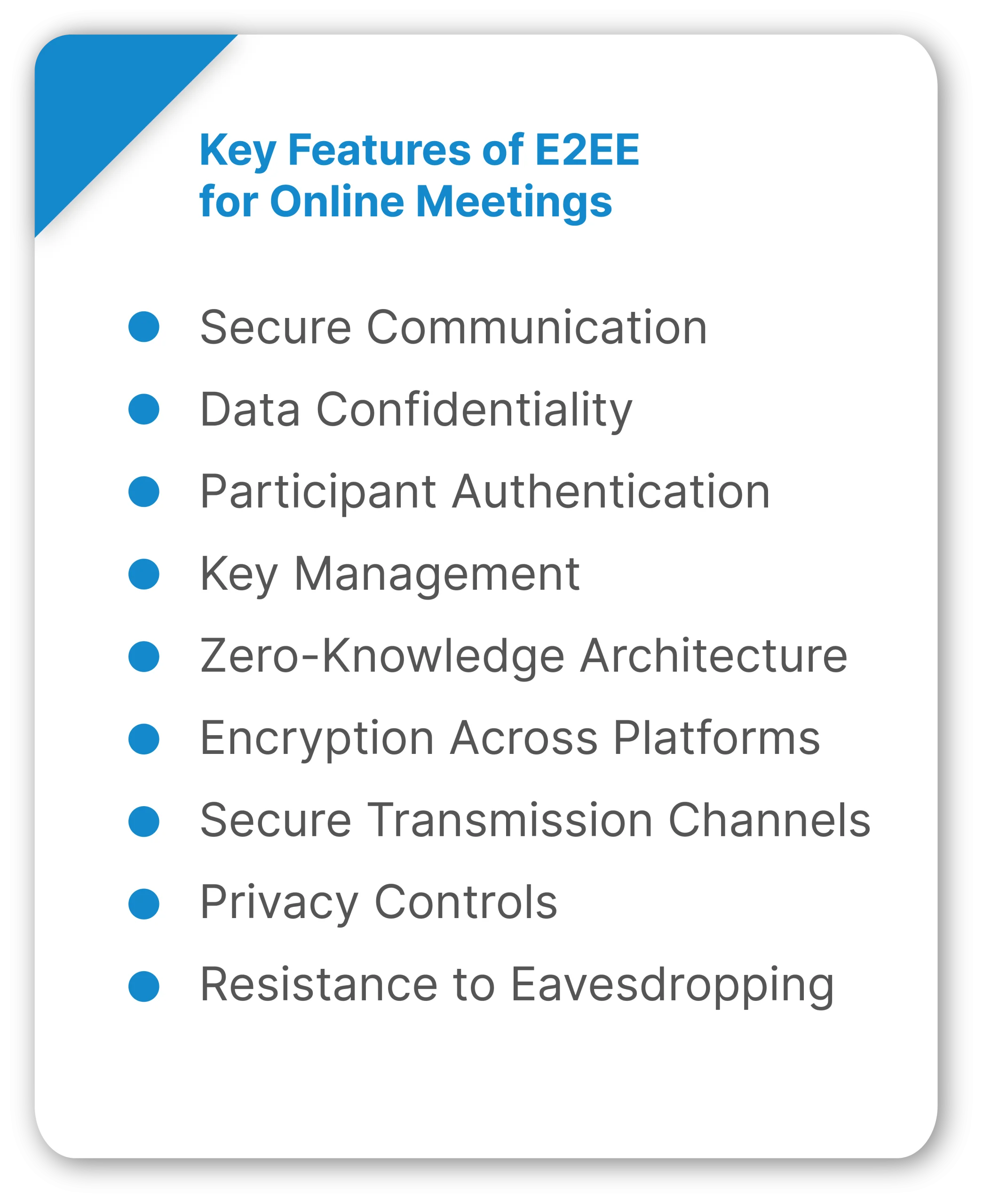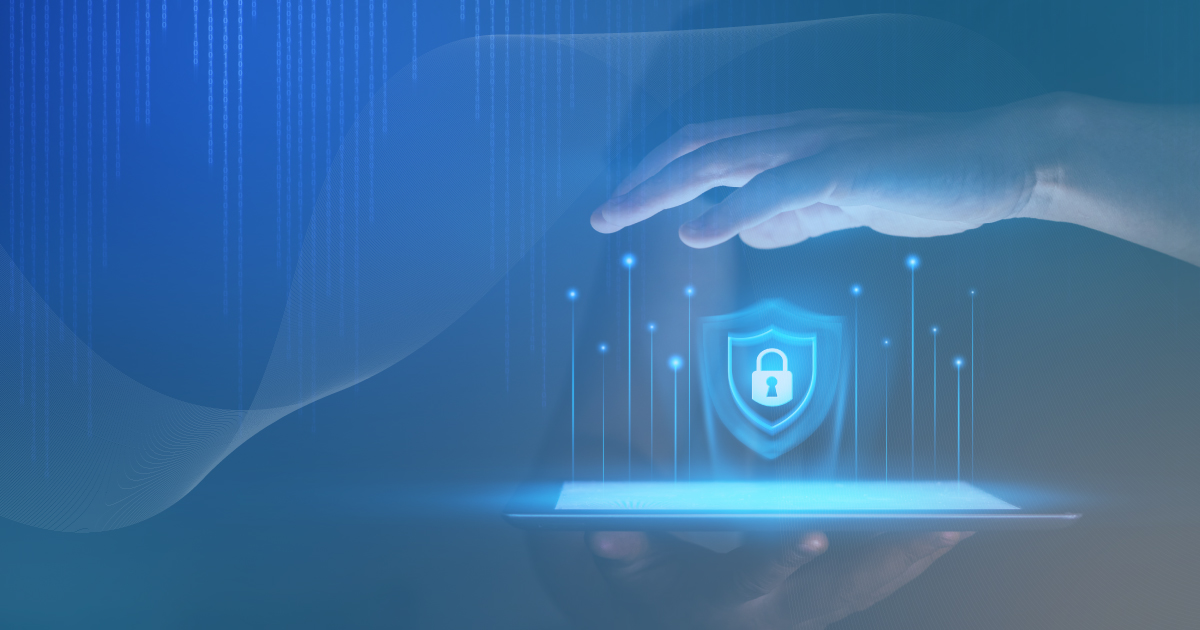As we tread further into the digital era, the importance of data privacy and security becomes a more prevalent issue.
Data breaches are becoming more common and the number of malicious actors seeking to intercept and acquire sensitive data is ever increasing.
That is why everyone is hard at work developing new ways to safeguard data and keep up with the culprits to minimize and prevent future data breach risks from popping up and end-to-end encryption is the most common defender found in telecommunications.
Our teams at Bicom Systems are hard at work researching the topic at hand and would like to share their insights with you.
So, let us delve into how exactly this security method helps protect customer data from getting snatched by unwanted individuals and how it can benefit the common user as well as some potential hiccups that end-to-end encryption creates elsewhere.
What Is End-to-end Encryption?
End-to-end encryption, better known as E2EE, is a security feature that restricts the conversation to designated participants only by providing them with a unique cryptographic key that provides the permissions to see and participate in the chat altogether.
These keys are unique to these users and nobody aside from them has them, making the contents of their correspondence nearly impossible to intercept or gain access to in any way, neither from hackers, or even the comm system provider or their ISP.
The process works in such a way that the sending end encrypts the data with their unique key first, after which the encrypted data is sent to the third party (the communication system provider) where it is stored as such and only gets decrypted when it is received by the other participating parties on their devices by their own cryptographic keys.
How This Benefits The User

End-to-end encryption’s method of securing data is still quite novel in the world as most companies tend to utilize the Encryption in transit method, but E2EE is seeing an upturn and is getting adopted more and more as more of its benefits start rearing their heads, some of which are:
True Customer Privacy
The most obvious one and the one mentioned earlier, having the data only ever be decrypted on the devices of conversation participants makes them breathe a small sigh of relief knowing that their exchanges are more secure than they ever were through other methods.
While not a foolproof method, it is still the most efficient one in keeping malicious actors or service providers from harvesting their data for their personal gain.
Data Integrity
With end-to-end encryption, it is a lot harder for non-participants to intercept and manipulate data thanks to the way the encryption and decryption processes work in E2EE, making the stored data useless to those that intercept it without the corresponding cryptographic keys that only the conversation’s participants have access to.
The security in this case is on a device level rather than a server level, making it too difficult for hackers to crack to be worth their while, further minimizing data breach risks in comparison to more archaic, encryption in transit methods that potentially compromise a vastly larger number of exchanges at once.
The Downsides Of E2EE
However, while end-to-end encryption is currently the next step forward in terms of telecommunications data security (and other fields), it is not without its shortcomings.
Not Entirely Private
While the content remains encrypted, the fact that messages are being sent from one end to another is still visible to other parties.
This log is available and relatively easy to intercept, allowing people to potentially divine the nature of the exchanges through enough time and deduction.
Device Theft Or Loss
While not too likely, devices can get lost or stolen which compromises all the communication that was done through it and often leaves users locked out of them unless you can recover it, meaning that users can potentially lose their valuable data, potentially forever due to the next detriment.
No Data Archival
Data recovery becomes near impossible with device level encryption as, without the device, the security works against you.
Your communications provider has the data, sure, but they do not have the cryptographic key that can unlock the encryption protecting it to decode it.
Just losing access to the account without proper recovery options that are difficult to create due to the existing data restriction in E2EE can make the data disappear as the device can get compromised through other means rather than just the communication app itself.
Stifling Law Enforcement Effectiveness
The more prevalent E2EE becomes, the harder it becomes for law enforcement to operate and catch criminals in the act as they lose out on potential evidence that they could otherwise acquire.
The balance of privacy versus safety is always a hot topic after all, and end-to-end encryption veered it too much in the favor of privacy to the point where public safety would start to suffer.
Great in the short term, but becomes worse the longer it is present on a grander scale.
That is why pushing E2EE as mandatory will not always be a surefire success strategy as different countries have a different approach to its disrupting presence and one needs to research the market before delving into it, or to make the End-to-end encryption optional.
Bicom Systems’ Stance On End-to-end Encryption
We here at Bicom Systems have done our own research on the topic as we want to be careful of how we go about it and whether to implement it into our product suite altogether, especially given the differing stances on the matter on a per country basis which makes compliance particularly challenging to work out ideally.
User data privacy is a pivotal concern, but so is ensuring that the products themselves comply with country regulations so they can legally stay on the market.
While we are still devising the ideal method of integration, our current goal is to make the feature an optional inclusion and only integrate it in products where it makes sense and is absolutely necessary due to data privacy concerns, like our Meeting module.
That said, we aim to be careful about it so we can devise a solution that best satisfies both sides.
In Conclusion
As with every new security inclusion, one always needs to be careful not to upset the existing equilibrium in a negative sense, even when something is seemingly beneficial like end-to-end encryption.
Proper research needs to be put into it to determine the pros and cons of both sides and weigh them against one another in order to better understand the feature and best determine whether it is worth implementing into an existing solution and in what matter to best go about it.
E2EE is certainly one such matter and we certainly do not take it lightly as we both seek to maintain our reputation as a trustworthy and reliable service provider and to not inconvenience either our partners or the end users of our products.
This is why we often value feedback on such delicate matters as it helps provide us with better insight into delivering the final decision on any new features.
If you have any input on the matter, we gladly welcome it, so be sure to contact us and bring up any concerns and suggestions.

